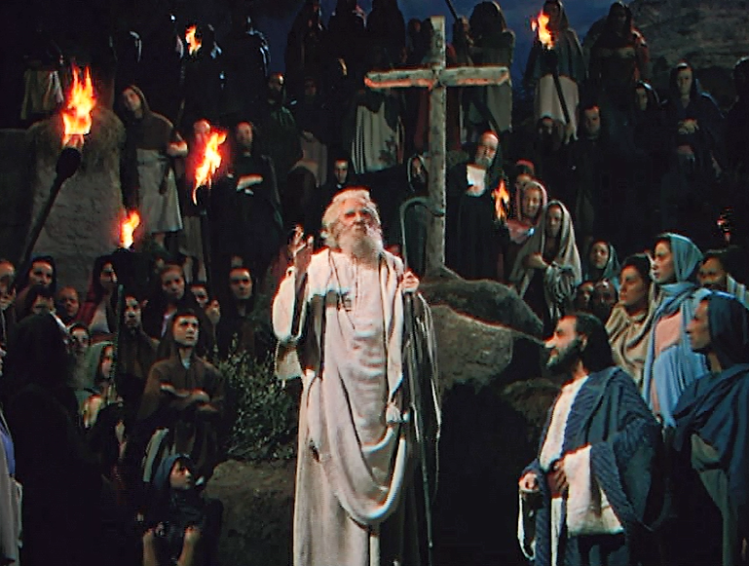
By its fourth decade of publication, Commonweal had secured a place of eminence—as well as a reputation for controversy—in American journalism. Largely defined by the work of John Cogley, James O’Gara, William Clancy, and William Pfaff (a group sometimes described as an Irish Catholic intellectual mafia), the magazine in the 1950s remained steadfast in its support of liberal democracy and Church reform at a time when Catholic influence in America was ascendant but still unwelcome in some intellectual quarters.
The first half of the decade was marked by the magazine’s public opposition to Sen. Joseph McCarthy and his campaign to identify Communist infiltration in American institutions. While the Catholic Church and Catholic press were essentially unanimous in their support for McCarthy, Commonweal editors, encouraged by Edward Skillin, consistently spoke out against McCarthy’s flagrant abuses of power. Throughout the 1950s, Commonweal refused to yield to parties, policies, or prejudices that threatened the spirit of free inquiry and free expression at the heart of liberal democracy. Censorship and blacklisting were antithetical to the magazine’s mission of putting Catholic faith in fruitful and frank conversation with modern life. Or, as the editors remarked on the occasion of the magazine’s thirty-fifth anniversary, “we think Catholics have not given enough thought to what it means to live in a pluralistic society and we consider it imperative that they repair this omission.”
While Commonweal’s opposition to McCarthy is well-documented, its concurrent efforts to apply the same imperative to the arts, though less heralded, were no less important—as the following excerpt by longtime Commonweal drama critic Walter Kerr reminds us. Writing at the height of Hollywood’s Production Code, Kerr took on the Catholic censors and gatekeepers whose outsized influence over the motion-picture industry regularly determined which movies Catholic audiences were allowed to view.
At issue in this case was the religious epic Quo Vadis, which the Catholic press had championed more for its missionary zeal than for its artistic merits. “Bad taste is not one of the seven deadly sins,” Kerr writes, “and nobody is going to Hell for having preferred Quo Vadis over God Needs Men. But neither is there any wisdom in elevating bad taste to the level of a virtue, or in confusing it with virtue itself.” Such confusion, Kerr argued, had the unintentional effect of discrediting the entire Catholic cultural and intellectual tradition. “Art without crooked lines is unnatural art—inevitably inferior art. And in its production not only the creative mind is betrayed; the Catholic mind, in its fullness, in its scope, in its centricity, is betrayed as well.”
In keeping with Kerr’s argument, Commonweal’s cultural coverage has long tried to assess the spiritual and aesthetic dimensions of artists and their work on their own terms rather than reducing them to their compatibility with Catholic moral doctrine. In recognition of this longstanding tradition of literary and cultural criticism, we present Walter Kerr’s “Catholics and Hollywood,” which reminds us that, though the Production Code and McCarthyism both eventually came to an ignoble end, the spirit of experimentation and aesthetic integrity remains central to the intellectual of both the country and the Church.
Bad taste is not one of the seven deadly sins, and nobody is going to Hell for having preferred Quo Vadis over God Needs Men. But neither is there any wisdom in elevating bad taste to the level of a virtue, or in confusing it with virtue itself. And it does seem to me that American Catholic criticism of the popular arts—especially the sort of criticism which is generally meted out to the motion picture—is rapidly driving itself into just such an unattractive, and philosophically untenable, corner.
However inadvertently, and with whatever genuine concern for the moral health of its membership, the Church in this country has permitted itself to become identified with the well-meaning second-rate. In effect, it has seemed to say: “I don’t care what the quality of the art work is, so long as its content is innocuous, or perhaps favorably disposed in our direction.”
In the most publicized Catholic “art” award of 1952, the Christophers selected Quo Vadis. This essay in calculated vulgarity represents, we are told, “creative work of enduring significance.” It is “outstanding,” not merely because it throws a certain number of Christians to a certain number of lions, but because it lives up to the highest esthetic “standards.” The truth, of course, slips out; in presenting the award, Father Keller immediately launches into praise of the film for showing “how a handful of human beings, fired with the love and truth of Christ, were able to overcome the might of Pagan Rome.” The esthetic norm is clearly the proselytizing content, if, with a little effort of the imagination, Quo Vadis can be considered as really having proselytizing content.
But this avowal—that Christians ought to like Quo Vadis because Quo Vadis likes Christians—is not a frank one. There is the additional insistence that the film’s special pleading, its fairly dim and remote hoeing of the Catholic row, be equated with artistic merit. Because St. Peter has been given a certain amount of footage in this production, this form of logic demands that therefore the movie in question be praised for its craftsmanship.
The intention is virtuous; the execution must therefore not be called into question, must indeed be lauded as supremely desirable. The makers of motion pictures are explicitly urged to go on in the same vein, with the assurance that they will thereby arrive at unparalleled esthetic glories. The Christopher News Notes announces that “outstanding personalities in the entertainment and literary fields...predict that if similar Christopher Awards are made for the next three or four years, they may do more to stimulate high quality work in these spheres of influence than any other single factor.”
The sort of judgment which at best reveals an alarming innocence of the possibilities, of the very texture of art, and which at worst smacks suspiciously of cant, has pretty much become rule-of-thumb for the American Catholic moviegoer. A film featuring a Saint is a film of majestic technical excellence. A film showing a nun driving a jeep is a superbly made comedy. A film embracing a jolly priest, a self-sacrificing Catholic mother, and an anti-Communist message must be defended in the diocesan press from those irresponsible esthetes and conspiratorial leftists—and even worse, those maverick Catholics—who have had the meanness and the malice to question it.
When there is no recent film of obviously Catholic sympathies—no priest in the pulpit, no nun in the backfield, no early-Christian Deborah Kerr in the jaws of a Technicolor lion—the next-best bet, in the current practice of Catholic criticism, is to play it safe. An earlier Christopher award—I am not really out after the Christophers; they got out there by themselves—went to Father of the Bride. Now Father of the Bride was a pleasant little film, certainly a harmless little film. That it represented the peak of creative achievement, of imaginative artistry, in its given year is, however, fairly doubtful. (If one wanted to be parochially picky about it, one might even raise some doubt about its suitability for an explicitly Catholic award; if the film reflected any social concept at all, it reflected precisely that slick, sentimental, materialistic concept of the two-child two-car family against which pulpit orators have so long and so richly fulminated.)
But it was a film which was kind to babies, kind to parents, generally optimistic about the domestic scene. It was therefore qualified for praise on the highest level of esthetic achievement.
The identification of good will with good work is commonplace in the Catholic press. Unfortunately, the sort of art which Catholics are urged to admire is commonplace, too—and the power which Catholic spokesmen have come to wield over the motion picture has helped make the motion picture even more commonplace than it need have been.
The penalties of this inverted esthetic—the notion that what is pure is also necessarily perfect—have thus been double. Catholic taste in motion pictures has been frozen at the “unobjectionable,” or purity-with-popcorn level, a level which if pursued down the ages, would have called into question nearly every literary or dramatic masterpiece ever produced. (We need not think of such rowdy samples as Volpone or Tartuffe; a Phèdre or a Hamlet will do.) And the American film has, through the rigid circumscriptions of the production code and the terrors of an unfavorable Legion of Decency rating, been dissuaded from attempting anything complex enough in the way of human behavior to serve as the basis for a new masterpiece.
The first of these penalties—the petrifaction of taste—cannot seem of much moment to men whose urgent concern is the saving of souls. Yet it has far more serious consequences than many an honest moralist realizes: it discredits the entire Catholic intellectual tradition. The man who has been to see Quo Vadis, and who has then read the Christopher citation, reaches certain conclusions: that the “Catholic” concept of art is a decidedly primitive one; that it probably rests on similarly primitive philosophical principles; that the Church, when its true colors are showing, is essentially antipathetic to the creative spirit, essentially in league with the vulgar.
The fact that each of these assumptions is thoroughly false, and would seem strange indeed to an Augustine, an Aquinas, or a Newman, is nothing for which the contemporary observer can be held responsible; the impression is thrust upon him, paraded before him, drummed in his ears by the most vocal Catholic spokemen in the field.
And this conviction that bad taste among Catholics is due to an ineradicable defect deep down in the Catholic philosophical mind leads to new damage: it tends to shut off Catholic intellectual influence altogether. We hear a great deal about the “influence” which Catholicism has had on the American screen. We forget that this influence has been wholly of one kind: the influence of the pressure group. The Legion of Decency is an economic weapon; the production code was written under the standing fear of boycott. Neither represents an intellectual victory in the sense that an esthetic principle has been stated with such clarity and force as to bring about free assent. The only persuasiveness we have been able to whip up is the persuasiveness of the dollar.
The barbed-wire barriers of the production code may be up; but the lines of communication are down. The theatergoer, the critic, or the creative artist who stands outside the Church looking in sees only a forbidding tangle of precaution and proscription, over which hovers a halo of bad taste. He does not notice much lively discussion of esthetic value; indeed, he will quickly discover that “esthetic” is a bad word in vast areas of the Catholic press. He does not notice much effort to liberalize parochial taste; indeed, he will quickly find most such effort labeled “art-for-art’s-sakeism.” He will nowhere run across any frank recognition of home truths—such as that a work of art may be perfectly clean and perfectly terrible. That he should feel vaguely uncomfortable in this environment is understandable. That he should reject it is perhaps inevitable. That he should feel, in rejecting it, that he is thereby rejecting the whole body of Catholic thought on the arts, the central content of Catholic philosophy itself, is tragic. Yet by stubbornly praising what is safely banal, by strenuously encouraging a low level of taste, we are fostering such an impression.
Our fear that any recognition of the claims of the “esthetic” may undermine the Catholic accomplishment to date, our reluctance to encourage any study of the nature of art as art, our insistence that the Catholic contribution stop dead at the cautionary level, have also brought about the second penalty mentioned above: the discouragement of the creative film-maker pursuing the ultimate possibilities of his craft.
Again this is going to seem no serious matter to the man whose whole concern is prudence. The motion picture, this man may tell himself, is probably never going to amount to much, anyway; the dangers of Hollywood indiscretion are greater than the possible damage that may be done to an exceptional film here and there; was Hollywood ever very “esthetic” in the first place?
To anyone who remembers the standard MGM scenario shortly before the Legion of Decency came into existence—Joan Crawford is Clark Gable’s mistress for six reels and triumphantly marries him in the seventh—this attitude may yet evoke a twinge of sympathy, a shrug of endorsement. But cynicism is no friend of truth, despair no incentive to achievement. It is never enough to substitute one vulgarity for another.
Unless one makes an esthetically informed and basically sympathetic approach to a medium, there is a likelihood of replacing one sort of error with another sort; even the “prudent” make mistakes. In the case of the production code, the failure to balance prudence with knowledge would seem to have resulted in some curious philosophical constructions. The notion, for instance, that sin is always, and very precisely, punished in this life would not appear to be Catholic dogma; yet it is at Catholic insistence that the screen echoes and re-echoes the concept.
A few years ago Warners re-made the old Maugham story, “The Letter.” In the original, as I remember it, the heroine’s infidelity (and her subsequent murder of her lover) was ironically paid off by the prospect of an eternal hell in the company of a husband who now knew the truth. In the re-make, under the code, it was necessary to dispatch the adulteress by having a handy native girl slip a knife into her. The new ending was logically improbable, esthetically ambiguous. It was also, it seems to me, morally simple-minded, reflecting a remarkably primitive understanding of the ways of God and men. (It might be mentioned that it was now also necessary to kill off the native girl, instituting a chain of blood vengeance unknown since The Oresteia.) There are more subtle, and more terrifying, punishments than the code quite envisions. There are also more “Catholic” ones.
To take another example more or less at random, the recent filming of A Streetcar Named Desire found Stella Kowalski leaving her loutish husband. There was sound enough reason for leaving this man, even apart from his table manners: he had dishonored his wife’s sister. But the code which demanded this climax was written under Catholic influence, with the guidance of Catholic spokesmen: is it actually the Catholic position that a wife must leave her husband for infidelity? And what, in this eye-for-an-eye, tooth-for-a-tooth world, has become of the virtue of charity?
Much more importantly, what has become of that profound little maxim Paul Claudel has quoted: “God writes straight with crooked lines”? This is pretty much the crux of the matter, so far as the making of films, or the creation of any sort of art, is concerned. The great artist, be he Claudel or Tolstoi, Racine or Shakespeare, follows the bent of human nature honestly through its aberrant as well as its generous impulses, through its virtues and vices alike, until all fall into place in a complex, but truthful, pattern. The lines are crooked, the ultimate vision straight. What is both wrong and foolish about the present production code is that it insists that God write straight with straight lines, that He attend strictly to business as the business is conceived by an either-or, black-and-white, pay-as-you-go mentality.
Art without crooked lines is unnatural art—inevitably inferior art. And in its production not only the creative mind is betrayed; the Catholic mind, in its fullness, in its scope, in its centricity, is betrayed as well. Because we are terrified that any admission of the legitimate claims of art will send us all dancing off into the perilous realms of “art for art’s sake”—though there are a dozen intermediate esthetic positions—we are moving closer and closer to the sort of stand which might well be described as “vulgarity for God’s sake.” I am not sure that God is well served by any dishonesty, by any distortion of the world He made—not even that distortion which enables us to “take the children.”
None of this is meant to say that the motion picture, or any other art form, should be exempted from legitimate criticism. Nor is it meant to say that the motion picture should be exempted from such criticism as may be considered specifically Catholic, specifically drawn from that body of wisdom which the Church has nurtured through the ages. I am not suggesting that a Catholic has no right to raise his voice or even to make use of such pressure tactics as a democratic society actually grants him. I do not really mean to hold out the hope that the Hollywood we know is a seething ferment of crushed genius which will, the moment the code is liberalized or the Legion relaxed, burst forth with a hundred magnificent films.
It is rather to say—as Catholics are so often and so honorably heard to say—that every right involves a responsibility. We have loudly asserted our rights where the screen is concerned; I am not sure that we have accepted, or even realized, our responsibilities, that we have behaved with full justice toward that gift of God which is known as “art,” toward the artist himself, toward the central tradition of Catholic thought, or even, sometimes, toward the working intellect itself. We have, for instance, talked ourselves into a corner, and into a code, which would automatically prohibit filming certain works of Mauriac, Claudel, Bernanos or Greene. Perversely, we have as Catholics made it difficult for the most distinguished—and the most influential—Catholic creative voices of our time to gain access to this particular medium.
Please email comments to [email protected] and join the conversation on our Facebook page.
Share
Previous Story
The Sanity of St. Benedict
Next Story
Waterfront Priest


